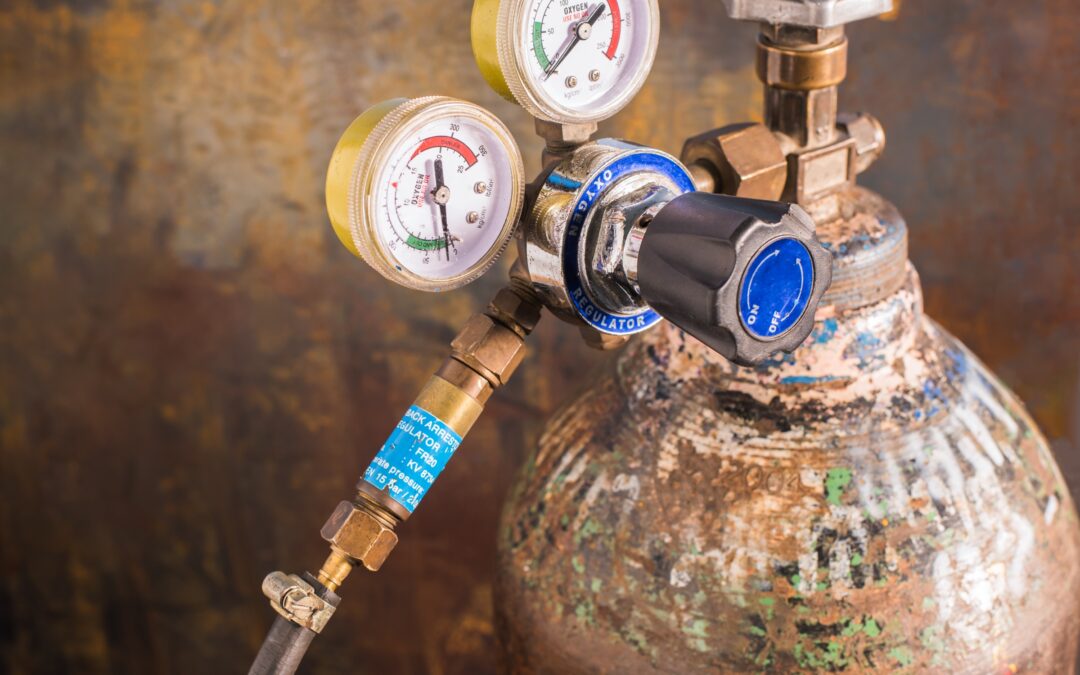Compressed gas cylinders contain substances under very high internal pressures, which can cause significant damage if not handled or stored correctly. An incident involving the release of flammable, corrosive, explosive, or toxic gases can lead to serious injuries.
Discussion Points:
- Identifying hazards of compressed gas cylinders.
- Understanding the Safety Data Sheet.
- Following safety guidelines for handling, using, and storing compressed gas cylinders.
- Using Personal Protective Equipment.
Discussion:
Compressed gas cylinders pose various hazards due to the substances they contain. They come in various sizes and can hold gases such as oxygen, acetylene, air, liquefied petroleum gas, carbon dioxide, nitrogen, and isobutylene. The gases within these cylinders can be flammable, combustible, explosive, corrosive, acidic, reactive, toxic, or inert. Additionally, the internal pressures of these gases can reach as high as 2,500 psi.
Follow safety guidelines when using compressed gas cylinders to prevent accidents and ensure the safety of everyone in the vicinity:
- Only use compressed and liquefied gases if you are trained and qualified. Always follow all federal, state, and local regulations for handling, storing, using, and disposing of compressed gases.
- Clearly label all cylinders. Adhere to the manufacturer’s instructions regarding the handling and use of the gas. Always read the manufacturer’s Safety Data Sheet (SDS) carefully.
- Before use, understand the properties, applications, and safety precautions associated with the gas. When transporting compressed gas cylinders, use a cylinder cart; never roll or drag a cylinder.
- Always keep cylinders upright to avoid rupture, and keep them away from heat, sparks, fire, physical damage, or electrical circuits. Secure cylinders using straps, chains, or cages.
- Store oxygen cylinders at least 20 feet away from flammable, combustible, or incompatible substances. Never store acetylene cylinders lying on their sides. Keep empty cylinders separate from full ones.
- Inspect cylinders for damage or leaks. Use soapy water to check for leaks. Ensure that cylinder valves, regulators, couplings, hoses, and apparatus are clean. Always use the correct regulator for the specific gas.
- Never force connection fittings, tamper, or alter the regulator. Make sure all connections are tight and secure. Do not modify the cylinder or its components. Avoid using copper fittings or tubing with acetylene cylinders.
- Open cylinder valves slowly and always stand to the side. Close the cylinder valve and release all pressure before removing the regulator. Always keep valves on gas cylinders closed and capped when not in use.
- Wear appropriate personal protective equipment (PPE), such as safety glasses or goggles, gloves, coveralls, and a hard hat. Only attempt to extinguish a fire involving compressed gas cylinders if you have received proper training.
- Contact emergency services in a fire involving compressed gas cylinders and evacuate the area immediately.
Following these guidelines can help ensure a safe working environment while handling compressed and liquefied gases.
As always, stay safe out there!


Recent Comments